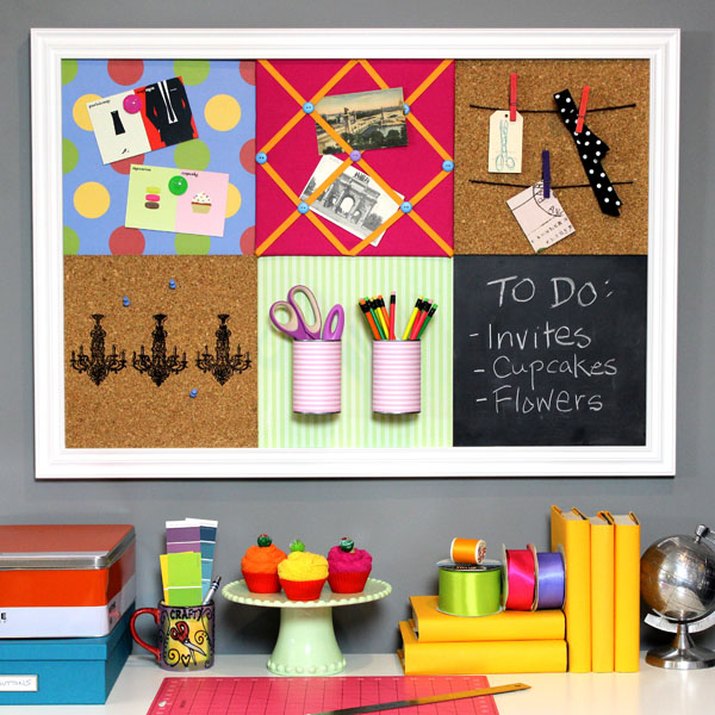
Overview
Nothing helps you organize your activities and projects quite like a bulletin board. With all your reminders and inspiration right there in front of you, you'll be more motivated to get things done. This framed bulletin board system features a grid of six different panels including a magnetic board, chalkboard, French memo board, and even a board with storage containers. So let the organizing begin!
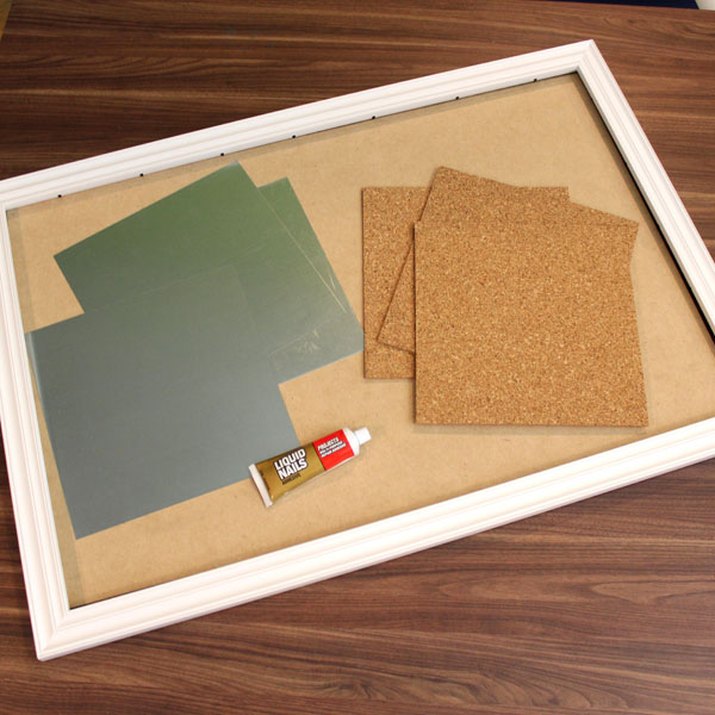
The Basic Materials
To create this grid bulletin board system, start with a pre-made 2-foot by 3-foot frame from an arts supply store. The frame will be 6 square feet, meaning there will be room for six 1-foot square panels. I used three panels of galvanized steel and three panels of cork board, but you can use any combination you wish. Galvanized steel is available at home improvement warehouses, and cork board is available at office supply stores. You will also need some glue like Liquid Nails.
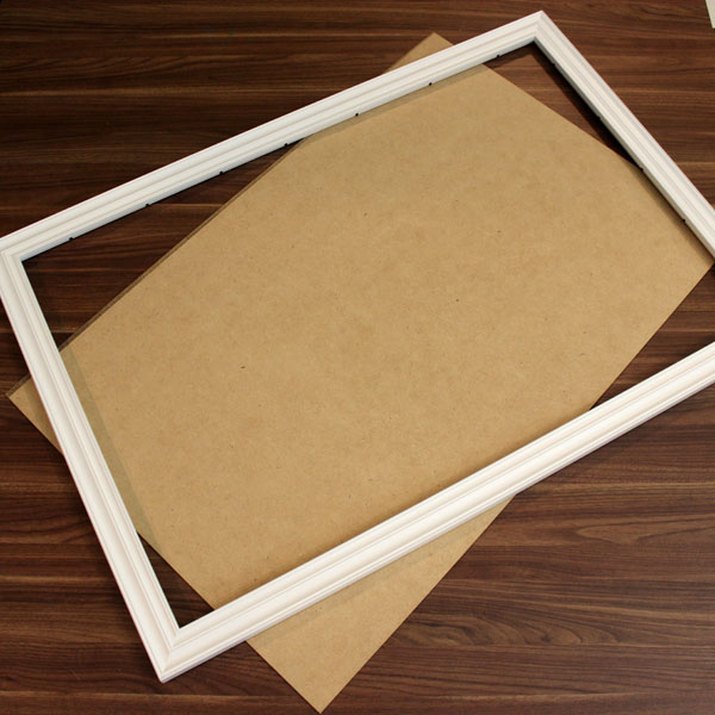
Disassemble the Frame
Remove the backing from the frame. If there is glass in front, remove the glass as well. Wear protective eyewear and gloves when removing the glass because any stress on the glass can cause it to break. You will be attaching the individual panels to the backing of the frame. So let's go over some different ideas for the panels.
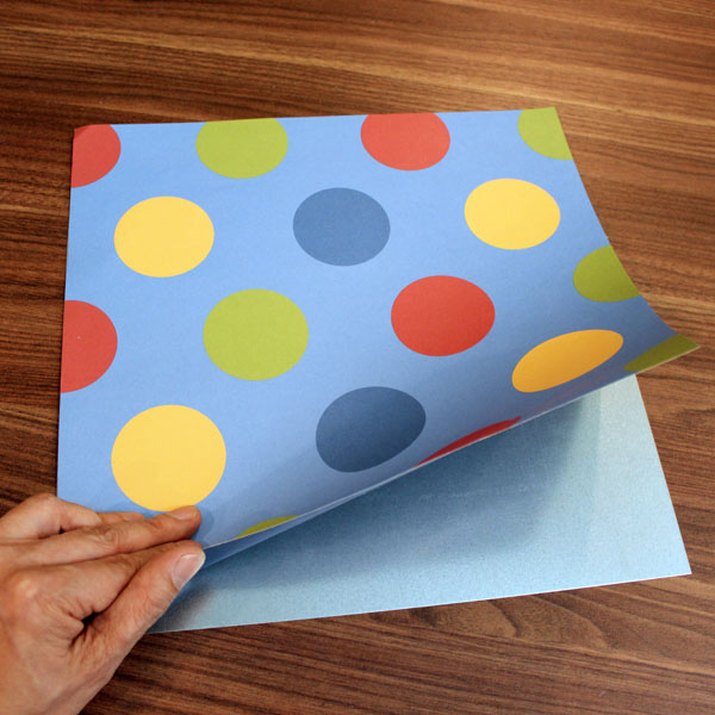
Steel Panel Idea #1: Magnetic Board
Galvanized steel is an ideal surface for magnets. While the steel has a sleek industrial look, covering the panel with decorative paper adds color and personality. I used scrapbook paper, which is perfectly sized at 12" by 12", adhering the paper to the metal with spray adhesive.
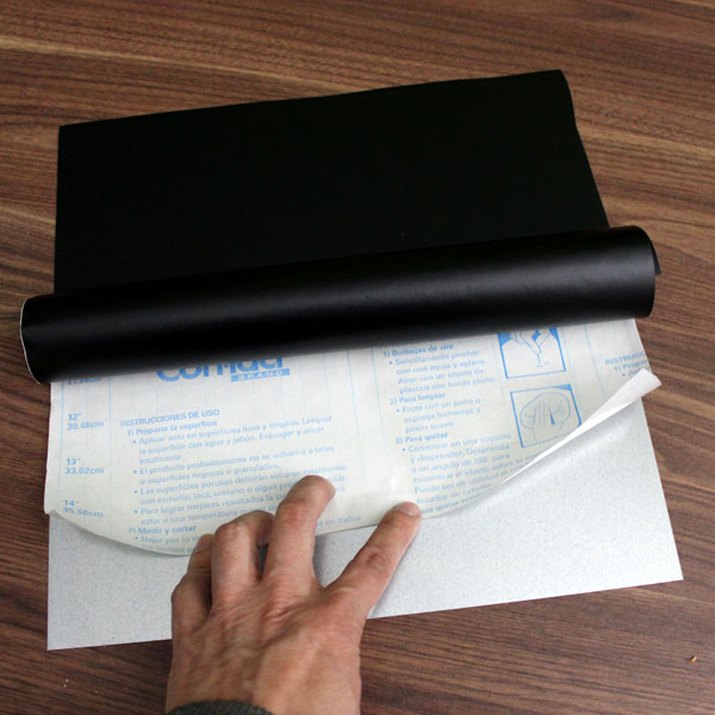
Steel Panel Idea #2: Chalkboard
The steel panel can also be turned into a chalkboard by covering it in black adhesive contact paper. Cut a piece of contact paper that is slightly larger than the square panel. Peel about an inch from the protective backing and place the exposed contact paper on the edge of the panel. Slowly unroll the rest of the contact paper, smoothing it out with your fingers, until the entire surface is covered. Then cut off the excess contact paper with scissors.
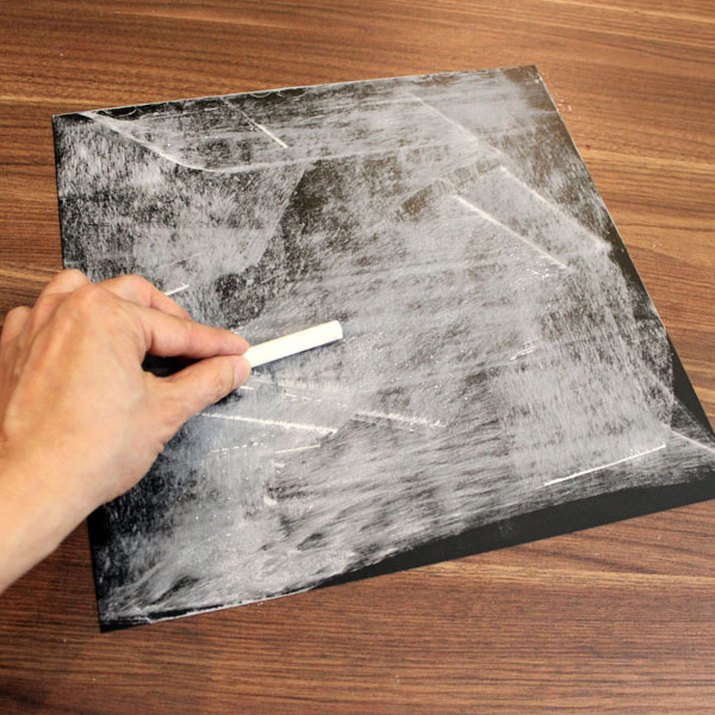
Preparing the Chalkboard Surface
Before you use the chalkboard, rub the flat end of a piece of chalk all over the surface, and then wipe off the residue with a dry tissue or cloth. This chalk "seasoning" takes the shine out of the contact paper, making it easier to write and erase.
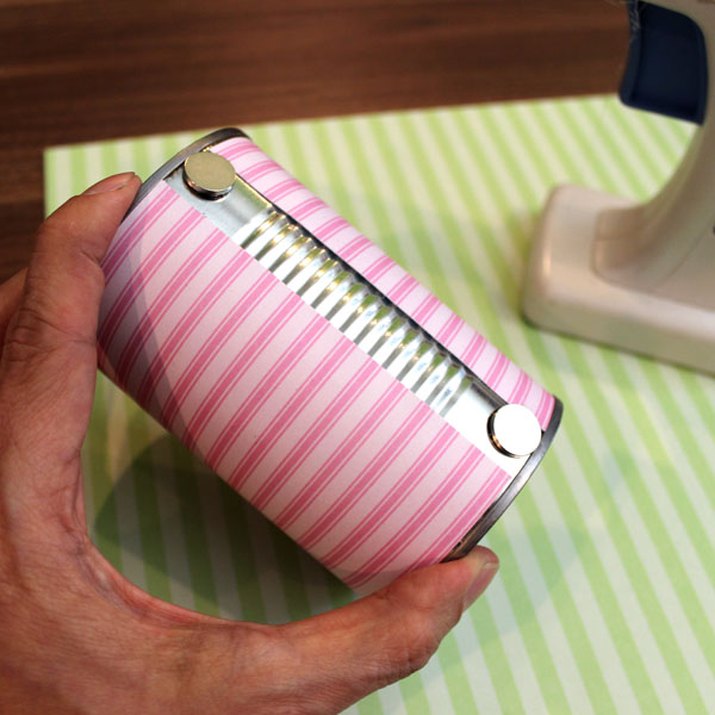
Steel Panel Idea #3: Magnetic Storage Tins
It's easy to add small storage containers to the magnetic panels. Clean some used tin cans and cover the outside with decorative paper. Leave about a half inch exposed. Hot glue two magnets on the exposed area of the can, one at the top and one at the bottom. The can then sticks right on the magnetic board, ready to hold supplies. The strongest magnets for this purpose are neodymium magnets, available at craft and hobby stores. However, they can be extremely dangerous if swallowed, so keep them away from children.
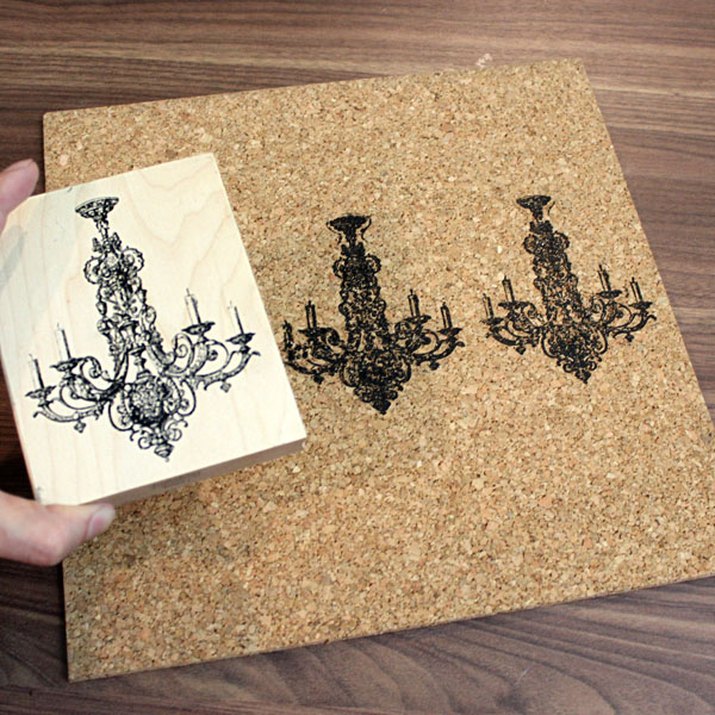
Cork Board Idea #1: Stamped Cork
Cork board can look a little utilitarian, so I like the idea of stamping a design on the cork to give it more style. Stamping onto cork is easy, and the panel looks great even before any materials are pinned to it. You can even draw or paint on the cork.
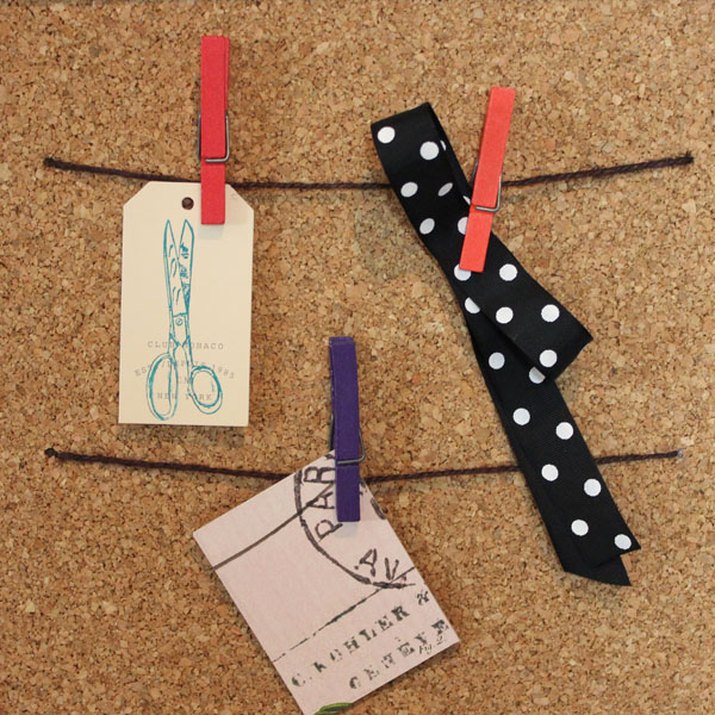
Cork Board Idea #2: Clothesline Board
Another fun way to customize a cork panel is to turn it into a clothesline board. In this type of board, clothespins on a string hold photos, ephemera and other light objects.
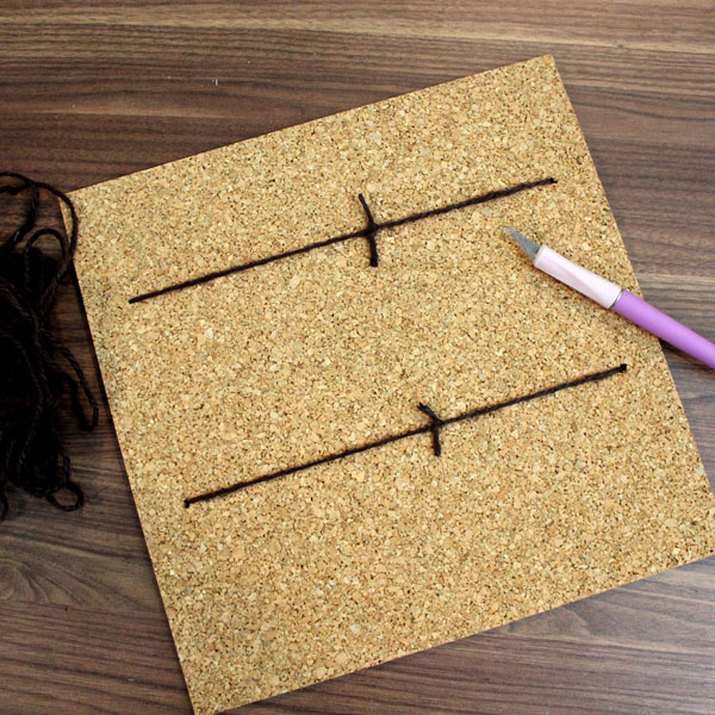
Making the Clothesline Board
Using a craft knife or nail, poke parallel holes on the left and right sides of the cork board, and thread some string through the holes. Tie knots in the string on the back side. The string should be as taut as possible.
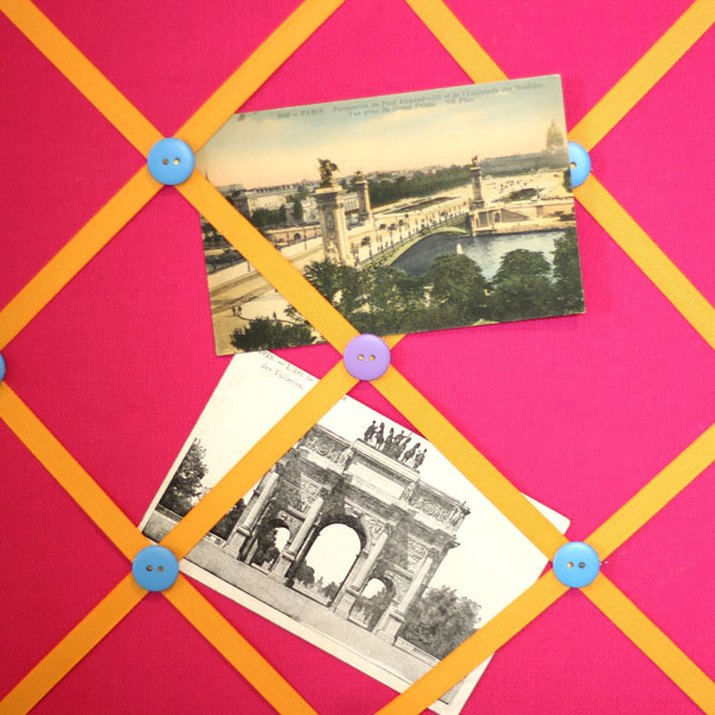
Cork Board Idea #3: French Memo Board
A French memo board is a fabric covered board with criss-crossing ribbons that hold photos. It is very easy to make with a cork board as its base.
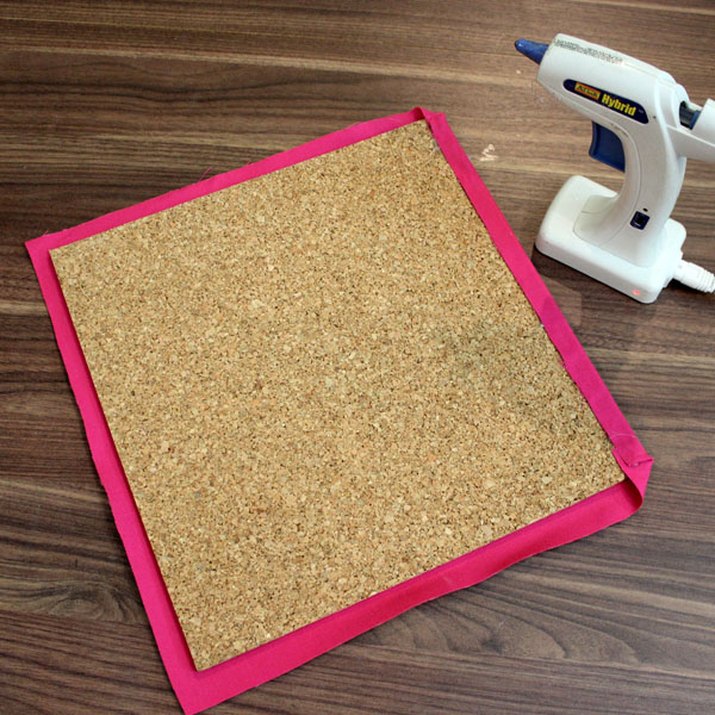
Making the French Memo Board
Cut a piece of fabric that is about one-half inch larger on all sides than the cork board. Adhere the edges of the fabric to the cork with a glue gun, turning the corners in to hide the excess fabric.
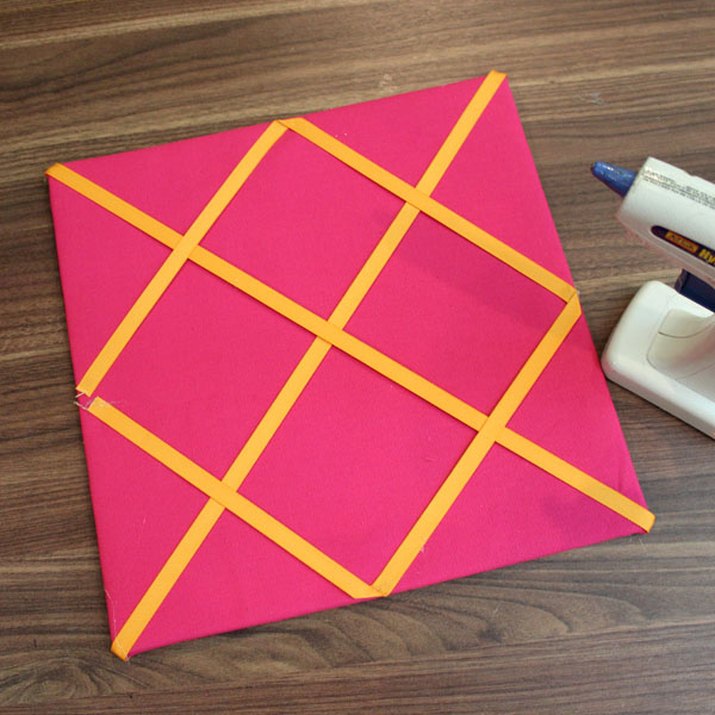
Glue on the Ribbons and Buttons
Use a hot glue gun to attach the ribbons on the fabric, adhering at the edges and anywhere the ribbons intersect. Then hot glue buttons at the intersections.
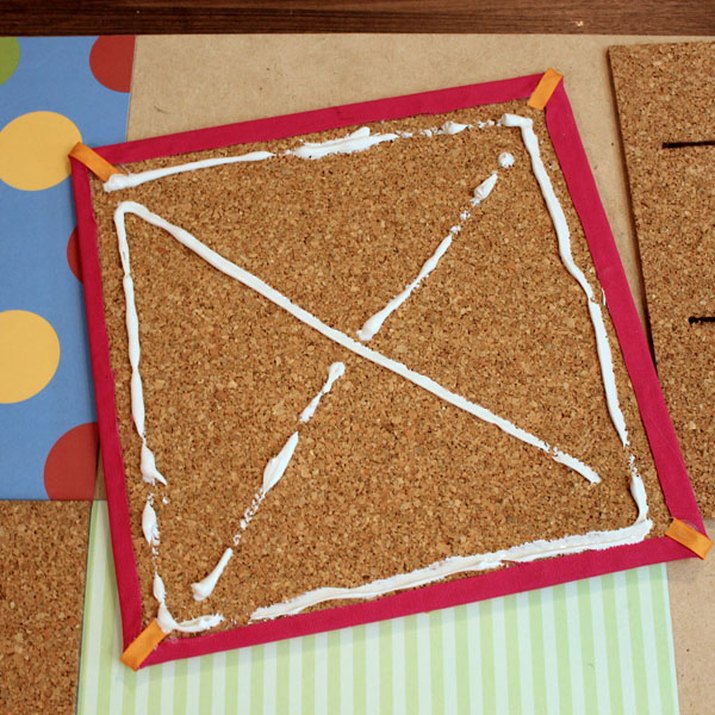
Attach All the Panels to the Backing of the Frame
When you're done with all six panels, it is time to form the grid. Apply permanent adhesive like Liquid Nails to the back of each panel. Position the panels where you want them on the backing of the frame, making sure that all the panels fit within this backing. Let the adhesive dry for 24 hours.
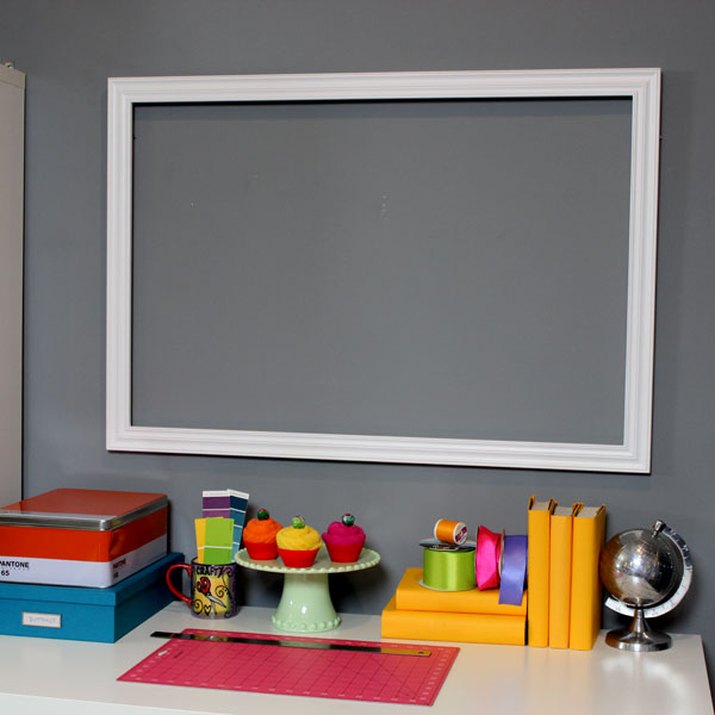
A Hint to Make Hanging Easier
While you wait for the glue to dry, hang the empty frame in your desired location. Placing all the hanging hardware on the wall is much easier when the frame is empty. Because it is so light, making adjustments is a breeze. Once you're happy with where the frame is, take it down from the wall and place the finished bulletin board grid inside the frame. Secure the board in place with the brackets on the frame.
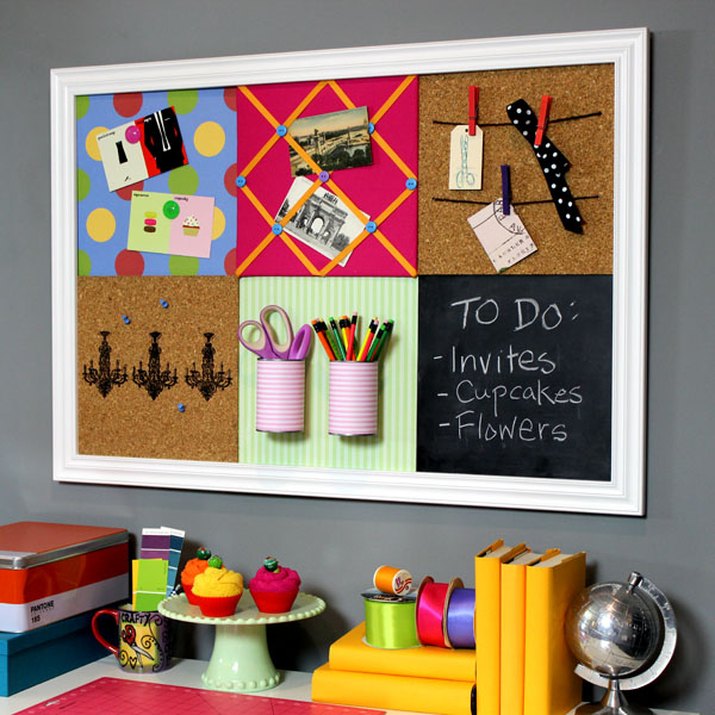
Stylish Organization
Whether you use it as an inspiration board, project center or work prioritizer, this grid bulletin board system will help you stay organized and motivated. After all, being organized never goes out of style. (And it's never too late to start!)
Advertisement
Video of the Day